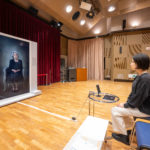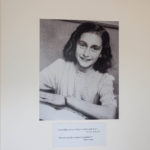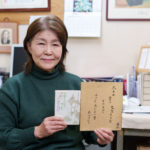Column Streetcars Come Back to Life in the Hypocenter
1 Streetcars from their Establishment to the Atomic Bombing
On November 23, 1912, when Hiroshima Dentetsu (“Hiroden”) (Hiroshima Electric Railway) began operations, it operated between Ekimae (current Hiroshima Station) to Miyukibashi Nishizume (current Miyuki-bashi) via Kamiyacho (near current Kamiya-cho intersection), and between Hatchobori and Hakushima. A little later, on December 8, it began operating between Kamiyacho and Koi (current Nishi-Hiroshima). On April 8, 1915 another line (the Ujina Line) opened between Miyukibashi Higashizume (later Senbaikyoku-mae station, later discontinued) and Mukoujina-guchi (current Motoujina-guchi). In May 1919, a bridge just for streetcars was built upstream of the Miyuki Bridge to connect Ekimae to Mukoujina-guchi via Kamiyacho together in one line. On November 1, 1917 the single track Yokogawa Line opened. Later, as per a request from the military, the Eba Line (to transport factory workers) and the Hijiyama Line (to transport military personnel, currently the Minami Line) opened in 1944. The track for the Hijiyama Line was laid when goods were in short supply, using the rails from the existing rails on the Miyajima Line between Densha Hatsukaichi (now Hiroden Hatsukaichi) and Densha Miyajima (now Hiroden Miyajima-guchi). As a result, that part of the Miyajima Line became a single-track line, while the Hijiyama Line opened was a double track line.
2 Circumstances Directly before the Bombing
The public transportation system at the time of the atomic bombing consisted of streetcars and small buses. In Hiroshima City, there were 123 streetcars then and 100 buses. However, during the war the government issued an order for buses to stop operating on lines where streetcar and bus lines overlapped; furthermore, due to fuel and spare part shortages during this time, less than 20 buses were in actual operation.
During the war the authority ordered that usage of some streetcar stops was to be discontinued, and people were ordered to refrain from using public transportation except in emergencies. This situation was prevalent not only in Hiroshima but throughout Japan. To ensure there would be no obstacles in the way of emergency vehicle traffic, a notice was issued that the policy was to stop using or removing island-shaped streetcar stops. However, the war ended before this could be implemented.
In other words, the widely available system for transportation now referred to as the “public transportation system” was considered a luxury, and a social atmosphere made it difficult for people to use unless there was an emergency. In this situation, the seats in some streetcars were removed, with bamboo handrails installed for passengers to hold onto while riding.
As the war worsened and there were not enough male workers, the Girls’ Domestic Science School of the Hiroshima Electric Railway Company was opened to supplement the workforce in April 1943. Initially, the students would go to school while working as conductors on streetcars, but as the war further intensified and male workers became increasingly rare, the female students were appointed to drive the streetcars too.
3 Circumstances When the A-bomb dropped and Reconstruction
When the atomic bomb was dropped, 108 out of 123 streetcars were damaged, and of those 22 were incinerated, three were partially incinerated, and 83 were destroyed to varying degrees. Of the 842 utility poles, 393 were damaged, as were 94,350 meters of power lines out of 102,400 meters. Among the 100 buses in the city, 68 were affected: 19 were incinerated, 13 were partially incinerated, and 36 destroyed in varying degrees. There was also damage to buildings and facilities, and streetcars and bus services in the city stopped completely.
On August 9, three days after the bombing, the first streetcar began to carry passengers between Koi and Nishi-Temmacho using streetcars that had been evacuated to the Miyajima Line (which had suffered only minor damage) and power from the Hatsukaichi substation. This became a sign of reconstruction. In fact, on the previous day, there had been a test run with Hiroden employees, and the government and military personnel. On August 9, two cars were linked and ran on the only single track line that had been restored. People with no money were allowed to ride for free. It is said that the fact that there still existed operating streetcars in the city, which was like wasteland after the bombing, gave courage to many citizens in Hiroshima. In addition to the streetcar services, some claimed to have witnessed free bus services running on August 8, running from Senda-machi to Hiroshima Station via Kamiya-cho, using the only two buses that could run. From the Hiroden headquarters in Senda-machi, it is said that people could see the buses running in the Kamiyacho area.
After the damage from the atomic bombing, which had far exceeded anyone’s imagination, not only Hiroden, but also military personnel (the army’s Tokyo Telegraph Corps) were mobilized to aid in the initial reconstruction. It is said that tanks were also dispatched for reconstruction to compensate for the lack of heavy machinery. Thanks to their dedicated efforts, one track from Nishi-Temmacho to Koamicho, further east, was restored on August 15.
And just as people could feel the reconstruction beginning, yet another major disaster struck Hiroshima on September 17. A large typhoon called the Makurazaki Typhoon caused landslides in the west part of the prefecture. The damage from the typhoon was enormous and washed away bridges in Hiroshima that had even withstood the blast of the atomic bomb, including Temma Bridge, Yokogawa Bridge, and Inari Bridge, which were used exclusively by streetcars. When the city was trying to recover after the bombing, the typhoon put a brake on the speed of recovery.
Hiroshima’s reconstruction began in earnest after the war ended on August 15, and after the typhoon that struck on September 17. With the military demobilization after the war, Hiroden’s staff formed the core of the reconstruction.
Soon after the war, a generator in Senda-machi was restored on August 18, and streetcars began running between Dentetsu-mae (now Hiroden-honsha-mae) and Mukoujina-guchi on the Ujina Line. Other lines were restored as well: from Koi to Dobashi on the main line on August 19, to Tokaichi-machi on August 21, to Sakancho (now Honkawacho) on August 23, and to Hatchobori on September 7. However, even with the resumption of operation, power issues (short-circuits) and downed power lines frequently caused the streetcars to stop. There were only ten cars that could operate, and the window glass and other materials could not be ordered, so some streetcars ran with boards fixed on the windows. The line running between Dentetsu-mae and Kamiyacho was restored on September 12, and to Ekimae on October 11. However, the streetcars were still operated on a single track line.
Two years later in 1947, operations resumed between Dobashi and Eba (now Funairi-minami-machi) on the Eba Line on November 1, and between Matoba-cho and Senbaikyoku-mae on the Hijiyama Line on July 1, 1948. Later, the Yokogawa Bridge, which had been washed away by the Makurazaki Typhoon, was rebuilt, and with it operation between Misasa (now Yokogawa Station) and Betsuin-mae on the Yokogawa Line was restored on December 18. Because of the road construction as part of city planning, the Hakushima Line was moved and reopened on June 10, 1952 on a relocated track. With this, the entire streetcar network in the city had managed to be restored.
Incidentally, while 108 of 123 cars were damaged at the time of the atomic bombing, 27 cars had been disposed of and the remaining 96 cars (including the ones not damaged) had been restored by 1950. Most of these cars were repaired at Hiroden’s factory (in the Senda depot), but that factory could not handle all the work by itself in a timely manner, so much of the work was outsourced. Remaining records indicate that Ujina Shipyard and Akatsuki Shipyard were the two companies to which the repair work was mainly outsourced (neither of them exists today). This means that there were other companies that had supported the restoration of the streetcars (as well as the two shipyards). Thanks to their efforts, the cities streetcar system was competently restored to its original state.
Later, during the motorization of the late 1960s and early 1970s, maintaining streetcars became difficult, and many cities in Japan discontinued them. However, various efforts have been made in Hiroshima to preserve the streetcar system. Today, Hiroshima is proactively introducing cutting-edge streetcars with super-low floor ergonomic cars. In fact, Hiroshima has the highest number of such streetcars in Japan. Through these efforts―in name and reality―Hiroshima has become the best known “City of Streetcars” in Japan.
(Kazutaka Kato)
References
Hiroshima Electric Railway. Hiroshima Dentetsu Kaigyo Hachiju, Soritsu Goju Nenshi (History of Hiroshima Electric Railway – 80 Years in Business, History of 50 Years since Founding). Hiroshima Electric Railway, 1992.
Hiroshima Electric Railway. Hiroshima Dentetsu Kaigyo Hyaku, Soritsu Nanaji Nenshi (History of Hiroshima Electric Railway – 100 Years in Business, History of 70 Years since Founding). Hiroshima Electric Railway, 2012.
Osafune, Tomonori. Hiroden ga Hashiru Machi Konjaku (The City where the Hiroden runs, Then and Now). JTB Publishing, June
2005.
Hiroshima Dentestsu Shanaiho “Rin’en” (Hiroshima Electric Railway’s Company Newsletter “Rin’en”). 1949: Vol. 39, 1954: Vol. 58, 1954: Vol. 91, others.
Report on the situation of facility reconstruction to the manager of the Accounting Division, Hiroshima City Reconstruction Bureau, dated September 3, 1947, others. 1944 bus schedule of the suburban lines of Hiroshima, and many other materials.








